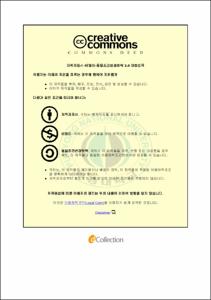16세기 성균관 학령의 변화 연구
- Alternative Title
- A Study on Changing of Regulations of SungKyunKwan in 16th Century
- Abstract
- 고려 말 중앙에 자리 잡기 시작한 신진사대부들은 조선 건국의 주체 세력이 되었고, 이들의 사상인 성리학은 조선의 정치이념으로서 자리 잡게 되었다. 조선 건국의 주체세력들은 성리학을 정착시킬 필요성과 더불어 성리학의 이념을 지니고 조선을 이끌어 나갈 인재양성에 관심을 가지게 되었으며, 이는 官學의 교육목적으로 귀결되었다.
성균관은 유교 이념을 가르치고 배우는 학문의 전당으로서의 기능과 국가의 관리를 양성하는 관리양성소의 기능을 동시에 가지고 있었다. 이 둘의 기능을 따로 떼어 논할 수 없지만 성균관의 교육적 제도와 기능이 성균관 유생들의 과거준비에 큰 비중을 두었다고 볼 때, 성균관의 교육목적은 국가에 필요한 관리양성에 있다고 할 수 있다.
본 연구는 1582년 선조 15년에 변화된 성균관의 학령 중 율곡(李珥, 1536 - 1584)이 지은 『學校模範』을 중심으로 官學의 교육목적에 私學의 인재상인 眞儒 즉 聖人 ․ 君子로의 추구가 덧입혀짐을, 변화한 학령의 내용 분석과 율곡이 편찬한 『聖學輯要』와의 비교 연구를 통해 밝히고, 이와 같은 성균관 학령의 변화가 갖는 의의를 탐구하는 것을 목적으로 하였다.
As the nation's highest-level educational institute, SungKyunKwan served two roles as an academic temple to teach Confucian ideology and as an educational agency to bring up government officials. Once Joseon Sung-Confucianism was established as the national ideology, however, its commitment was heavily inclined to the educational service of bringing up officials as a national educational institute.
In 1582 at the 15th year of King Seonjo's reign, Yulgok wrote and submitted Hakgyomobeom and Hakgyosamok at the royal order. They were then recognized as the educational regulations of SungKyunKwan and later widely accepted and used among national educational institutes.
They had a completely different nature from the old educational regulations, which merely served as school operation regulations in connection with the state examination. It marked the shift of educational goal at a national educational institute from simple production of officials to production of scholars of Sugi and Chiin.
The old "educational regulations" consisted of total 14 articles, which can be characterized as follows: first, regulations about the Confucian students' daily life living in the dormitory; second, regulations about the ways lessons are given, reading methods, and teaching materials; third, regulations about examination and evaluation methods; fourth, regulations about punishment for the students' language and behavior; and finally, regulations about student recommendation. It is difficult to grant meanings to them more than as regulations for school operation.
Hakgyomobeom consists of total 16 articles, specifically prescribing the academic purposes and self-cultivation methods required from a scholar, which were not found in the old educational regulations. Containing 16 articles compared with Seonghakjipyo, it has the three following characteristics:
First, it emphasizes that both teachers teaching future scholars and students receiving their teaching should set their bodies right in order to achieve the goal of changing scholars.
Second, its articles were based on the lessons of sages.
Third, it followed Geogyeonggungriyeokhaeng, Yulgok's self-cultivation theory.
The best way to change scholars is self-cultivation, which is in line with Geogyeonggungriyeokhaeng, whose methods and content were based on the writings and notes of sages in Hakgyomobeom. Thus it had the universality and neutrality of Sung-Confucianism and provided the students with implicative and specific suggestions, thus claiming its significance.
Hakgyosamok consisted of total 10 articles and stipulated an institution to have instructors and students concentrate only on study. First, the Articles 1 to 4 address the qualifications and promotions of instructors; second, Article 5 is about the treatment and economic security of instructors; third, Article 6 is about student selection; fourth, Article 7 is about the quorum of each school, utilization of educational resources by national educational institutes, and enforcement of school attendance; fifth, Article 8 is about the treatment of students by school; sixth, Article 9 is about the evaluation of instructors and the operation of Hakgyosamok; and finally, Article 10 is about the qualifications of the state examination.
The findings on the content and nature of the educational regulations show that they presented the specific methods and ways of self-cultivation through Hakgyomobeom added to the existing educational regulations and supplemented the institution to have instructors and students concentrate only on study through Hakgyosamok.
Those changes to the educational regulations are very significant in that they moved forward from the main purpose of bringing up officials at national educational institutes and specified Sarim's ideal pursuit of sages and men of honor according to the reality through Yulgok, who was a prominent scholar and politician representing Sarim, on the part of mature Joseon Sung-Confucianism.
- Issued Date
- 2012
- Awarded Date
- 2012. 8
- Type
- Dissertation
- Publisher
- 부경대학교
- Alternative Author(s)
- Kang, Hyun Goo
- Affiliation
- 부경대학교 대학원
- Department
- 대학원 사학과
- Advisor
- 신명호
- Table Of Contents
- 목 차
Abstract
I. 서론 = 1
1. 연구의 필요성 및 연구 목적 = 1
2. 연구방법 = 5
3. 논문의 구성 = 5
Ⅱ. 『聖學輯要』와『學校模範』의 상관성 = 6
1. 士林의 교육목적과 교육방향 = 6
2. 『聖學輯要』․『學校模範』의 관계 분석 = 9
Ⅲ. 『學校模範』의 분석 = 15
1. 『學校模範』의 16개 조목 분석 = 15
2. 『學校事目』의 목적과 성격 = 33
Ⅳ. 成均館 學令의 변화와 의의 = 39
1. 기존 학령의 분석 = 39
2. 기존 학령과 『學校模範』․『學校事目』의 비교 = 47
Ⅴ. 결론 = 48
1. 연구결과 요약 = 48
2. 논의와 한계 = 49
참고문헌
- Degree
- Master
- Files in This Item:
-
-
Download
 16세기 성균관 학령의 변화 연구.pdf
기타 데이터 / 1.07 MB / Adobe PDF
16세기 성균관 학령의 변화 연구.pdf
기타 데이터 / 1.07 MB / Adobe PDF
-
Items in Repository are protected by copyright, with all rights reserved, unless otherwise indicated.